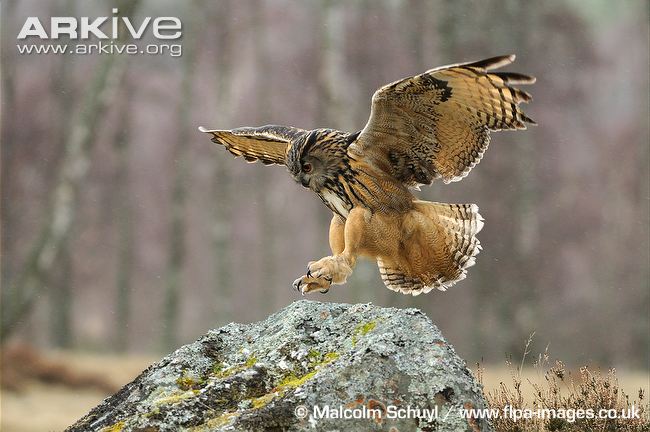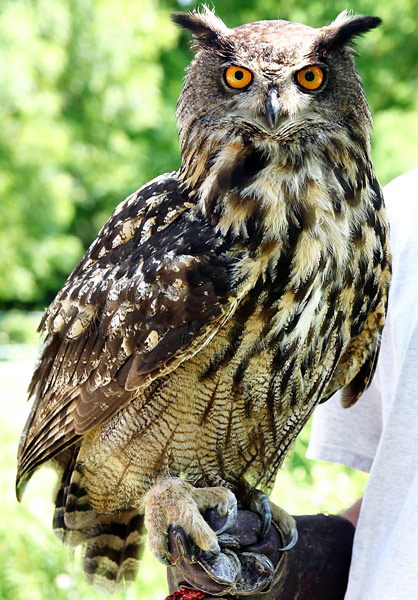
Bubo bubo
SUBFAMILY
Striginae, Tribe Bubonini
TAXONOMY
Strix bubo Linnaeus, 1758, Sweden. Fourteen subspecies are
recognized.
OTHER COMMON NAMES
English: Common, great, or northern eagle-owl; French:
Grand-duc d’Europe; German: Uhu; Spanish: Bъho Real.
PHYSICAL CHARACTERISTICS
23.6–29.5 in (60–75 cm). Female, 2.2–5.5 lb (1,750–4,200 g).
Male, 1.5–3.2 lb (1,500–2,800 g). The largest owl, it is almost
barrel-shaped. It has prominent, erect ear tufts, golden to orange
eyes, and a powerful, black beak. Legs and feet are fully
feathered. The subspecies vary in size, overall color, and intensity
of dark markings.
DISTRIBUTION
Europe from Spain to northern Norway and Finland on through
Asia to Pacific, south to Iraq and Iran, Pakistan, and China.
HABITAT
The Eurasian eagle-owl is less able to cope with human habitation
than its United States counterpart the great horned owl. It
is found in more inaccessible areas—rocky terrains, wilderness,
forests and woodlands, and rocky farmlands.
BEHAVIOR
This owl is territorial and mainly sedentary except in the very
north of its range. It is primarily nocturnal, but is sometimes
active at dawn and dusk as well. At the northern edge of its
range, this owl is active during the day in summer.
FEEDING ECOLOGY AND DIET
Feeds mainly on mammals from voles to hares (hedgehogs are
important in some areas), birds up to pheasant size, and occasionally
diurnal birds of prey. It usually hunts from an open
perch.
REPRODUCTIVE BIOLOGY
Often nests in rocky crevices and caves; will use old birds’
nests, but seems to prefer the ground. Lays two to four eggs.
Incubation is 34–36 days. Young fledge at 10 weeks. An average
of 1.6 young are produced per successful nest.
CONSERVATION STATUS
Not globally threatened, but uncommon to rare throughout its
range.
SIGNIFICANCE TO HUMANS
None known
Photo Gallery of - Eurasian eagle-owl




 Animalia Life
Animalia Life